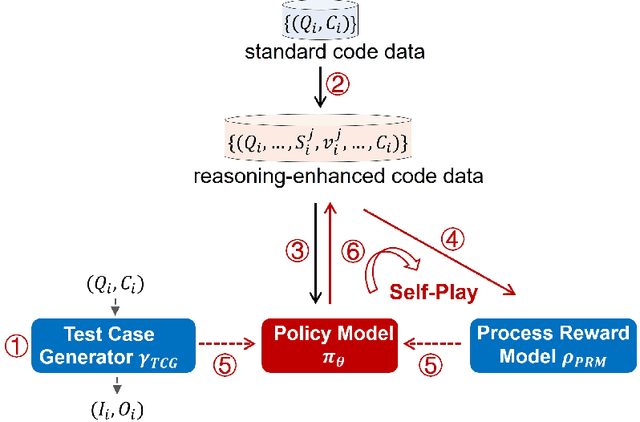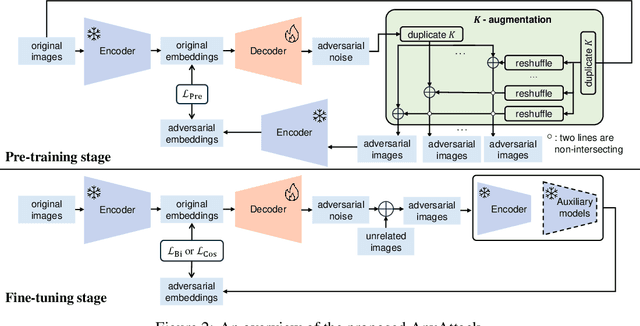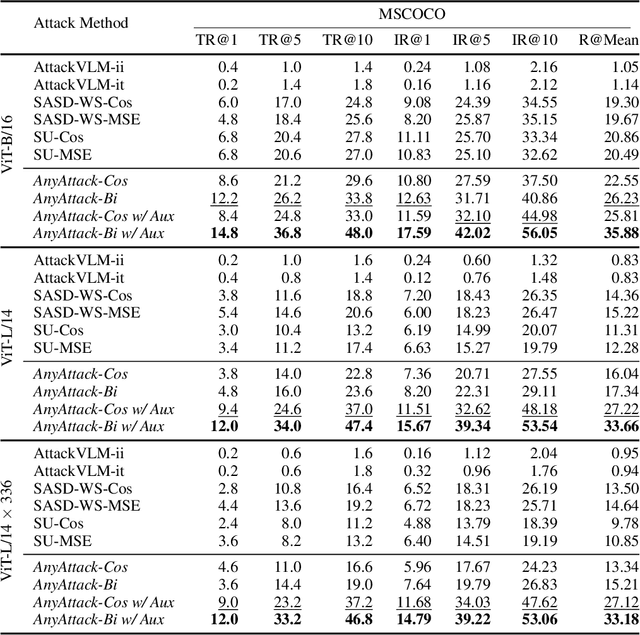Jitao Sang
Unifying Perplexing Behaviors in Modified BP Attributions through Alignment Perspective
Mar 14, 2025Abstract:Attributions aim to identify input pixels that are relevant to the decision-making process. A popular approach involves using modified backpropagation (BP) rules to reverse decisions, which improves interpretability compared to the original gradients. However, these methods lack a solid theoretical foundation and exhibit perplexing behaviors, such as reduced sensitivity to parameter randomization, raising concerns about their reliability and highlighting the need for theoretical justification. In this work, we present a unified theoretical framework for methods like GBP, RectGrad, LRP, and DTD, demonstrating that they achieve input alignment by combining the weights of activated neurons. This alignment improves the visualization quality and reduces sensitivity to weight randomization. Our contributions include: (1) Providing a unified explanation for multiple behaviors, rather than focusing on just one. (2) Accurately predicting novel behaviors. (3) Offering insights into decision-making processes, including layer-wise information changes and the relationship between attributions and model decisions.
Debiased Prompt Tuning in Vision-Language Model without Annotations
Mar 11, 2025Abstract:Prompt tuning of Vision-Language Models (VLMs) such as CLIP, has demonstrated the ability to rapidly adapt to various downstream tasks. However, recent studies indicate that tuned VLMs may suffer from the problem of spurious correlations, where the model relies on spurious features (e.g. background and gender) in the data. This may lead to the model having worse robustness in out-of-distribution data. Standard methods for eliminating spurious correlation typically require us to know the spurious attribute labels of each sample, which is hard in the real world. In this work, we explore improving the group robustness of prompt tuning in VLMs without relying on manual annotation of spurious features. We notice the zero - shot image recognition ability of VLMs and use this ability to identify spurious features, thus avoiding the cost of manual annotation. By leveraging pseudo-spurious attribute annotations, we further propose a method to automatically adjust the training weights of different groups. Extensive experiments show that our approach efficiently improves the worst-group accuracy on CelebA, Waterbirds, and MetaShift datasets, achieving the best robustness gap between the worst-group accuracy and the overall accuracy.
Agent models: Internalizing Chain-of-Action Generation into Reasoning models
Mar 09, 2025Abstract:Traditional agentic workflows rely on external prompts to manage interactions with tools and the environment, which limits the autonomy of reasoning models. We position \emph{Large Agent Models (LAMs)} that internalize the generation of \emph{Chain-of-Action (CoA)}, enabling the model to autonomously decide when and how to use external tools. Our proposed AutoCoA framework combines supervised fine-tuning (SFT) and reinforcement learning (RL), allowing the model to seamlessly switch between reasoning and action while efficiently managing environment interactions. Main components include step-level action triggering, trajectory-level CoA optimization, and an internal world model to reduce real-environment interaction costs. Evaluations on open-domain QA tasks demonstrate that AutoCoA-trained agent models significantly outperform ReAct-based workflows in task completion, especially in tasks that require long-term reasoning and multi-step actions. Code and dataset are available at https://github.com/ADaM-BJTU/AutoCoA
Mobile-Agent-V: Learning Mobile Device Operation Through Video-Guided Multi-Agent Collaboration
Feb 25, 2025Abstract:The rapid increase in mobile device usage necessitates improved automation for seamless task management. However, many AI-driven frameworks struggle due to insufficient operational knowledge. Manually written knowledge helps but is labor-intensive and inefficient. To address these challenges, we introduce Mobile-Agent-V, a framework that leverages video guidance to provide rich and cost-effective operational knowledge for mobile automation. Mobile-Agent-V enhances task execution capabilities by leveraging video inputs without requiring specialized sampling or preprocessing. Mobile-Agent-V integrates a sliding window strategy and incorporates a video agent and deep-reflection agent to ensure that actions align with user instructions. Through this innovative approach, users can record task processes with guidance, enabling the system to autonomously learn and execute tasks efficiently. Experimental results show that Mobile-Agent-V achieves a 30% performance improvement compared to existing frameworks. The code will be open-sourced at https://github.com/X-PLUG/MobileAgent.
OpenRFT: Adapting Reasoning Foundation Model for Domain-specific Tasks with Reinforcement Fine-Tuning
Dec 22, 2024Abstract:OpenAI's recent introduction of Reinforcement Fine-Tuning (RFT) showcases the potential of reasoning foundation model and offers a new paradigm for fine-tuning beyond simple pattern imitation. This technical report presents \emph{OpenRFT}, our attempt to fine-tune generalist reasoning models for domain-specific tasks under the same settings as RFT. OpenRFT addresses two key challenges of lacking reasoning step data and the limited quantity of training samples, by leveraging the domain-specific samples in three ways: question augmentation, synthesizing reasoning-process data, and few-shot ICL. The evaluation is conducted on SciKnowEval, where OpenRFT achieves notable performance gains with only $100$ domain-specific samples for each task. More experimental results will be updated continuously in later versions. Source codes, datasets, and models are disclosed at: https://github.com/ADaM-BJTU/OpenRFT
o1-Coder: an o1 Replication for Coding
Nov 29, 2024



Abstract:The technical report introduces O1-CODER, an attempt to replicate OpenAI's o1 model with a focus on coding tasks. It integrates reinforcement learning (RL) and Monte Carlo Tree Search (MCTS) to enhance the model's System-2 thinking capabilities. The framework includes training a Test Case Generator (TCG) for standardized code testing, using MCTS to generate code data with reasoning processes, and iteratively fine-tuning the policy model to initially produce pseudocode, followed by the generation of the full code. The report also addresses the opportunities and challenges in deploying o1-like models in real-world applications, suggesting transitioning to the System-2 paradigm and highlighting the imperative for environment state updates. Updated model progress and experimental results will be reported in subsequent versions. All source code, curated datasets, as well as the derived models will be disclosed at https://github.com/ADaM-BJTU/O1-CODER .
Don't Command, Cultivate: An Exploratory Study of System-2 Alignment
Nov 26, 2024



Abstract:The o1 system card identifies the o1 models as the most robust within OpenAI, with their defining characteristic being the progression from rapid, intuitive thinking to slower, more deliberate reasoning. This observation motivated us to investigate the influence of System-2 thinking patterns on model safety. In our preliminary research, we conducted safety evaluations of the o1 model, including complex jailbreak attack scenarios using adversarial natural language prompts and mathematical encoding prompts. Our findings indicate that the o1 model demonstrates relatively improved safety performance; however, it still exhibits vulnerabilities, particularly against jailbreak attacks employing mathematical encoding. Through detailed case analysis, we identified specific patterns in the o1 model's responses. We also explored the alignment of System-2 safety in open-source models using prompt engineering and supervised fine-tuning techniques. Experimental results show that some simple methods to encourage the model to carefully scrutinize user requests are beneficial for model safety. Additionally, we proposed a implementation plan for process supervision to enhance safety alignment. The implementation details and experimental results will be provided in future versions.
VaLiD: Mitigating the Hallucination of Large Vision Language Models by Visual Layer Fusion Contrastive Decoding
Nov 24, 2024Abstract:Large Vision-Language Models (LVLMs) have demonstrated outstanding performance in multimodal task reasoning. However, they often generate responses that appear plausible yet do not accurately reflect the visual content, a phenomenon known as hallucination. Recent approaches have introduced training-free methods that mitigate hallucinations by adjusting the decoding strategy during inference stage, typically attributing hallucination to the language model itself. Our analysis, however, reveals that distortions in the visual encoding process significantly affect the model's reasoning accuracy. Specifically, earlier visual layers may retain key features but gradually distort as the information propagates toward the output layer. Building on these findings, we propose a novel hallucination-mitigation method from the visual encoding perspective: \textbf{V}isu\textbf{a}l \textbf{L}ayer Fus\textbf{i}on Contrastive \textbf{D}ecoding (VaLiD). This method utilizes uncertainty to guide the selection of visual hidden layers, correcting distortions in the visual encoding process and thereby improving the reliability of generated text. Experimental results show that VaLiD effectively reduces hallucinations across various benchmarks, achieving state-of-the-art performance compared to multiple baseline methods.
Debiasing Vison-Language Models with Text-Only Training
Oct 12, 2024



Abstract:Pre-trained vision-language models (VLMs), such as CLIP, have exhibited remarkable performance across various downstream tasks by aligning text and images in a unified embedding space. However, due to the imbalanced distribution of pre-trained datasets, CLIP suffers from the bias problem in real-world applications. Existing debiasing methods struggle to obtain sufficient image samples for minority groups and incur high costs for group labeling. To address the limitations, we propose a Text-Only Debiasing framework called TOD, leveraging a text-as-image training paradigm to mitigate visual biases. Specifically, this approach repurposes the text encoder to function as an image encoder, thereby eliminating the need for image data. Simultaneously, it utilizes a large language model (LLM) to generate a balanced text dataset, which is then used for prompt tuning. However, we observed that the model overfits to the text modality because label names, serving as supervision signals, appear explicitly in the texts. To address this issue, we further introduce a Multi-Target Prediction (MTP) task that motivates the model to focus on complex contexts and distinguish between target and biased information. Extensive experiments on the Waterbirds and CelebA datasets show that our method significantly improves group robustness, achieving state-of-the-art results among image-free methods and even competitive performance compared to image-supervised methods. Furthermore, the proposed method can be adapted to challenging scenarios with multiple or unknown bias attributes, demonstrating its strong generalization and robustness.
AnyAttack: Towards Large-scale Self-supervised Generation of Targeted Adversarial Examples for Vision-Language Models
Oct 07, 2024



Abstract:Due to their multimodal capabilities, Vision-Language Models (VLMs) have found numerous impactful applications in real-world scenarios. However, recent studies have revealed that VLMs are vulnerable to image-based adversarial attacks, particularly targeted adversarial images that manipulate the model to generate harmful content specified by the adversary. Current attack methods rely on predefined target labels to create targeted adversarial attacks, which limits their scalability and applicability for large-scale robustness evaluations. In this paper, we propose AnyAttack, a self-supervised framework that generates targeted adversarial images for VLMs without label supervision, allowing any image to serve as a target for the attack. To address the limitation of existing methods that require label supervision, we introduce a contrastive loss that trains a generator on a large-scale unlabeled image dataset, LAION-400M dataset, for generating targeted adversarial noise. This large-scale pre-training endows our method with powerful transferability across a wide range of VLMs. Extensive experiments on five mainstream open-source VLMs (CLIP, BLIP, BLIP2, InstructBLIP, and MiniGPT-4) across three multimodal tasks (image-text retrieval, multimodal classification, and image captioning) demonstrate the effectiveness of our attack. Additionally, we successfully transfer AnyAttack to multiple commercial VLMs, including Google's Gemini, Claude's Sonnet, and Microsoft's Copilot. These results reveal an unprecedented risk to VLMs, highlighting the need for effective countermeasures.
 Add to Chrome
Add to Chrome Add to Firefox
Add to Firefox Add to Edge
Add to Edge